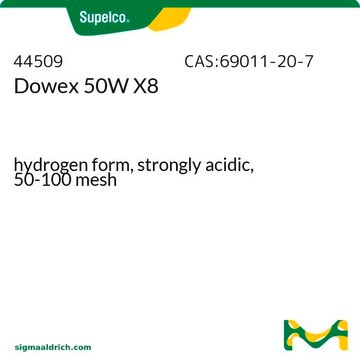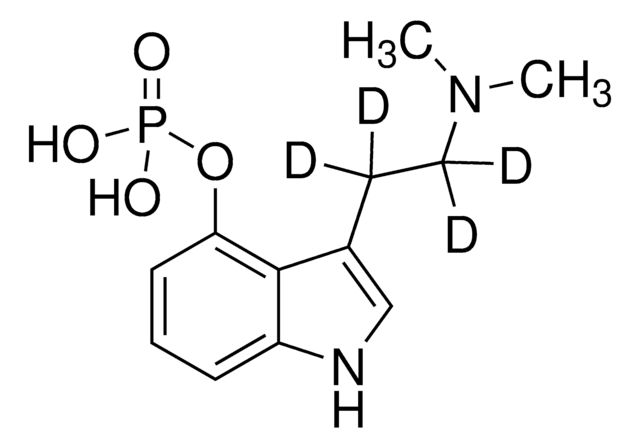2055105
Split, with cup (packed with 10% OV-1 on Chromosorb-W HP)
pkg of 5 ea
About This Item
Productos recomendados
envase
pkg of 5 ea
L × D.I. × D.E.
78.5 mm × 6.3 mm × 4.0 mm
¿Está buscando productos similares? Visita Guía de comparación de productos
Categorías relacionadas
Descripción general
OV-1 is a modified silicone polymer which has good temperature stability. It is suitable as liquid phases in chromatography. The least polar is a dimethylsilicone which is sold under the mane OV-1.
Chromosorb W, a fragile white solid prepared heating the diatomaceous earth with a flux. The resulting fine structure is cemented over glass which results in large and irregular pores. HP is the classification of a support as high performance grade.
Palabra de señalización
Danger
Frases de peligro
Consejos de prudencia
Clasificaciones de peligro
STOT RE 1 Inhalation
Órganos de actuación
Lungs
Código de clase de almacenamiento
6.1C - Combustible acute toxic Cat.3 / toxic compounds or compounds which causing chronic effects
Clase de riesgo para el agua (WGK)
WGK 1
Punto de inflamabilidad (°F)
214.0 °F - closed cup
Punto de inflamabilidad (°C)
101.1 °C - closed cup
Elija entre una de las versiones más recientes:
Certificados de análisis (COA)
Lo sentimos, en este momento no disponemos de COAs para este producto en línea.
Si necesita más asistencia, póngase en contacto con Atención al cliente
¿Ya tiene este producto?
Encuentre la documentación para los productos que ha comprado recientemente en la Biblioteca de documentos.
Nuestro equipo de científicos tiene experiencia en todas las áreas de investigación: Ciencias de la vida, Ciencia de los materiales, Síntesis química, Cromatografía, Analítica y muchas otras.
Póngase en contacto con el Servicio técnico








